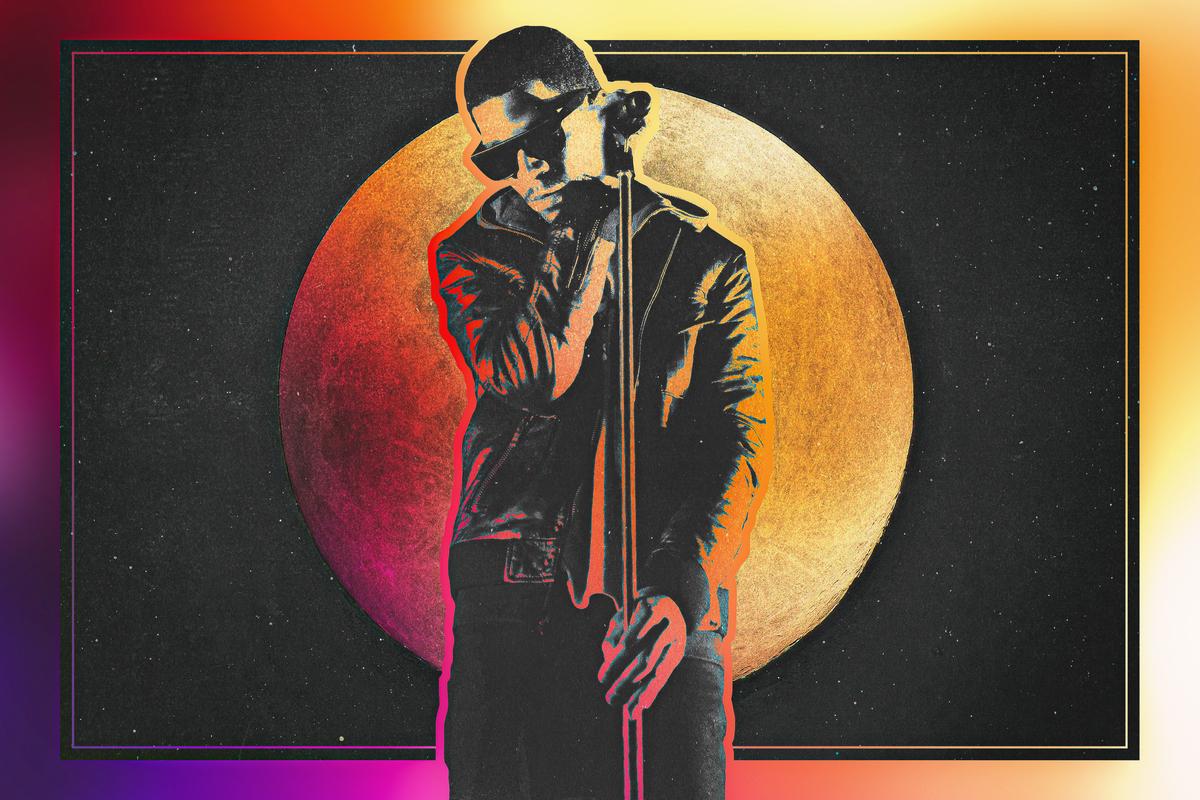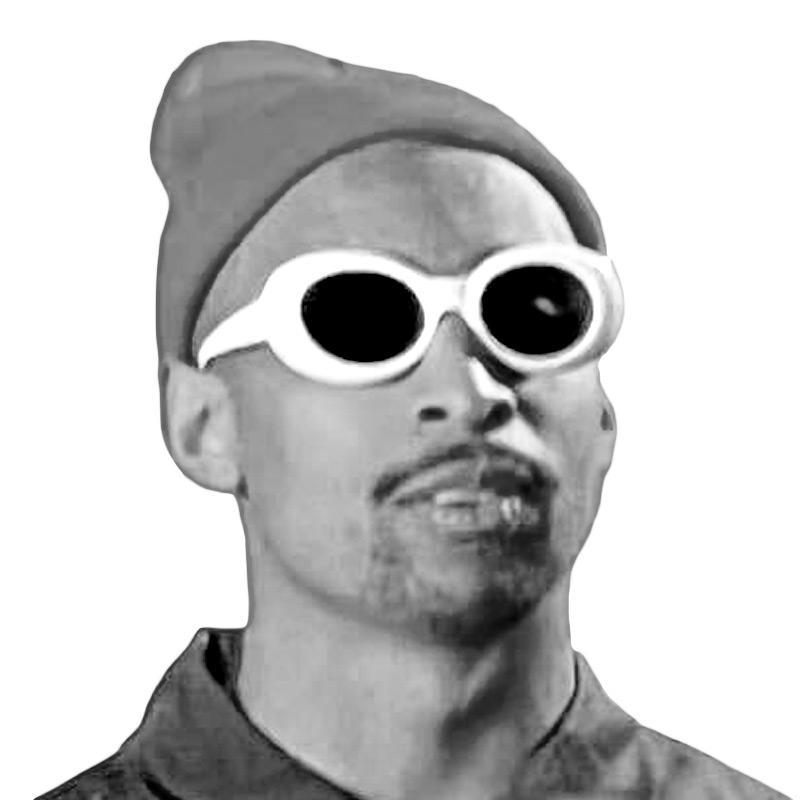
Music has a way of bringing you back to a moment. In the case of Kid Cudi’s first two Man on the Moon projects, it brings me back to 2010, to the 51 AC transit bus line that rode from Berkeley to Oakland. I’d periodically hop on the line, retreat to the back, pop on the albums on my iPod Touch, and reflect on my place in life. I was in the final two years at Berkeley High School and the product of respected parents, failing to live up to academic expectations, and chronically depressed. The circumstances made me a recluse, scared to divulge my problems and too afraid to confront them head on. But for those 45 or so minutes, Cudi’s first two studio albums became a beacon of hope, showing me that I wasn’t alone no matter what I was dealing with.
I got wind of Cudi’s music about a year before, from some homies who insisted I listen to his mixtape A Kid Named Cudi. I kept going back to the project’s seventh track, “Day ‘n’ Nite.” The song seemed to speak to what I was dealing with: I was the poor kid of parents who both earned degrees, yet didn’t achieve a grade point average of over 2.0 for a full semester. Cudi, born Scott Mescudi, bounced around high schools in the suburbs of Cleveland before he was expelled for threatening to punch a principal. His mom was a teacher like mine, and his father had passed, as mine would in 2016.
He moved to New York to pursue a career in music in 2004. A few years later, his music landed in the hands of Kanye West. He was soon signed to the rapper’s G.O.O.D. Music label and began work on Ye’s 808s & Heartbreak in 2008, an album that dealt with West’s depression from the death of his mother and the end of his engagement with Alexis Phifer. Cudi then prepped for his debut full-length, the following year’s Man on the Moon: The End of Day, a 58-minute journey of self-reflection. On “Soundtrack 2 My Life,” he details his rise and the conflicts that come with it: “I tried to think about myself as a sacrifice / Just to show the kids they ain’t the only ones who up at night,” he raps, “The moon will illuminate my room and soon I’m consumed by my doom.” He was gaining notoriety, but he couldn’t buy his way out of survivor’s remorse from achieving his dreams in New York while his friends stayed back in Ohio. “Solo Dolo” explains the isolation one feels in a somber state, simultaneously building a wall against the outside world while hoping outsiders break through and help. By the album’s eighth track, “Sky Might Fall,” Cudi has found strength in his isolation, while “Pursuit of Happiness” shows there may be a path to solace. The album showed me that I wasn’t alone in my thoughts—that what I felt was valid, but more importantly, that I wasn’t the only one who felt that way.
The project’s interludes, narrated by Common, illuminated Cudi’s new “psychedelic state,” which seemed to allude to the demons he faced and the cocaine habit he developed to cope with his newfound success. Videos surfaced of an intoxicated Cudi unable to walk after a night out in Los Angeles in 2010, the same year he would plead guilty to charges for felony criminal mischief and possession of a controlled substance. Cudi’s dark road led him to a different tone on Man on the Moon II: The Legend of Mr. Rager, which also came out that year. If his debut project showed optimism that he could shake his habit, his second effort showed that he had become comfortable in the dark place he now inhibited.
Cudi was rich, sad, lonely, and addicted to stimulants. “Don’t Play This Song”—one of two Man on the Moon II duets with Mary J. Blige, another artist who has publicly discussed depression—is a magnum opus of insecurity. He calls out the blogs for making fun of his kilt, brags about his short-lived HBO show How to Make It in America, and ends the first verse by revealing that “Mom’s calling, think I should hit decline / I’m numb-faced while I’m thinking ’bout suicide.” But the song pushes away anyone trying to help him with its refrain: “People think they really being helpful / By telling me please be careful / Yeah, right (you ain’t thinking about me).” As the subject matter gets darker, Cudi seems to revel in his new world. But he uses the leather jacket, Chuck Taylors, Ray Bans, and sauce as a cloak to hide his pain, creating Mr. Rager, a superhero-like character who can do drugs like the rock stars he grew up idolizing, while temporarily hiding his grief.
“It was like I became invincible,” Cudi told Joe Rogan in 2014. “The Rager character was a real thing. ... So in not being able to talk to another human alive that really got what I was dealing with, I became obsessed with all the greats that could have possibly been dealing with the same thing psychologically. And then I dove into Morrison and Hendrix and Kurt early on and got obsessed. And then I was like, these are my heroes, they understand me, and if I die this way then this is destiny. So I really didn’t give a shit.”
Cudi wasn’t the first rapper to tackle these feelings. The genre has a long history of grappling with mental health, dating back to at least the Geto Boys’ “Mind Playing Tricks on Me” in 1991. Even hip-hop titans like the Notorious B.I.G. and Tupac weren’t afraid to be vulnerable in their music—Pac put his emotions on full display on albums like Me Against the World while Biggie’s “Suicidal Thoughts” ends with the narrator taking his own life. But Cudi approached his music differently. Where his predecessors may have addressed their state of mind occasionally, Cudi built entire projects around it. He was raw and vulnerable, embracing his inner struggles, no matter how dark it seemed. Man on the Moon II especially felt like a cry for help. At times it sounded twisted; other times it was beautiful. It’s a horror movie in which the listener feels both sorry for and scared of the protagonist’s circumstance.
The project hit at a particularly hard time for my 17-year-old self. By November 2010, I was inching toward the end of my high school tenure and failing every expectation set forth by my parents. My grades dipped below a 2.0, dashing any hopes my mother had of me going to college or a football career, which brought shame from my father. A little more than a year after the first Man on the Moon, I was experiencing a “Solo Dolo” episode of my own, with no one to talk to and no one to trust. I was isolated and in shame. But Cudi’s second effort provided an outlet for these feelings. That’s something Cudi set out to achieve at the start of his career.
“All I wanted to do was help kids not feel alone and stop kids from committing suicide,” Cudi told Arsenio Hall in 2014.
Cudi occupies a lane in hip-hop that cuts against the genre’s most macho instincts. His music demonstrated that you can be vulnerable and strong simultaneously. That’s resonated with plenty of people beyond myself: Pete Davidson credits Cudi for “saving his life”; Jaden Smith calls Cudi his “number one favorite artist”; Travis Scott has collaborated with him and called him an inspiration—and lore has it that he adopted the “Scott” moniker as an homage to Mescudi. Hip-hop as a whole has spoken more openly about mental health in recent years, and that’s at least partly thanks to Cudi’s music.
This Friday, Cudi will return with Man on the Moon III: The Chosen. It comes after a hard-fought decade for Cudi, as he’s fallen out and reconciled with Kanye and entered rehab for depression and suicidal urges. The album’s subject matter will be familiar to anyone who’s engaged with his music. Song titles include “Solo Dolo, Pt. III,” “Sad People,” “Damaged,” and “Lovin’ Me.” MOTM III’s back cover also offers something of a thesis statement: “In the last 10 years, Scott Mescudi has been through hell and back. After feeling like his world was over, he found hope and overcame the darkness that was plaguing his life. But happiness isn’t forever. What he thought was peace turns into a nightmare.” Cudi, however, seems to have found something resembling peace in the past few years. As he said at a PBS town hall in July, “I knew I deserved peace and to be happy, but I didn’t know how. It took me a while to get to this place of commitment, to say I’m gonna get through this. To know that we can take our pain and turn it into something.”
For me, the third installment of the Man on the Moon series couldn’t come at a better time personally. No longer the kid on the bus trying to figure out whether life would amount to anything, I’m now living out Little Logan’s dreams, but the mental toll hasn’t subsided. Yes, I got the job I’ve always strived for, but it came as millions have lost their employment in the midst of a global pandemic that has killed millions more. And I’m doing it relatively near that 51 bus line in Oakland, where thousands aren’t as fortunate as me. Simply put: I’m more or less feeling the same emotions Cudi felt during his rise.
“I didn’t like that I had money and success and I had made it,” Cudi told Beats 1 in 2016. “Everybody I had ever met in my life, good people, weren’t able to experience the same, and I wasn’t able to truly enjoy my success. Even though I worked hard for it, it bothered me that I had just had so much and my friends didn’t.”
For any Cudi fan, Scott can’t solve your problems with his songs. But as his first two albums show, he may give you something more important: that you’re not alone in your struggles—which is a comfort that we all could use during these times.

